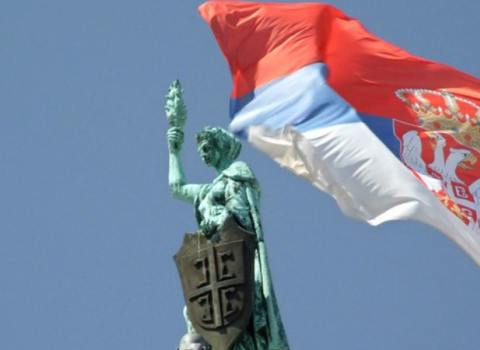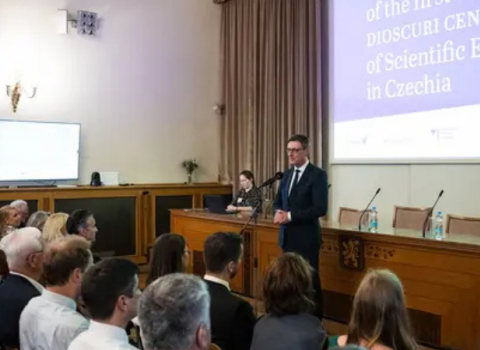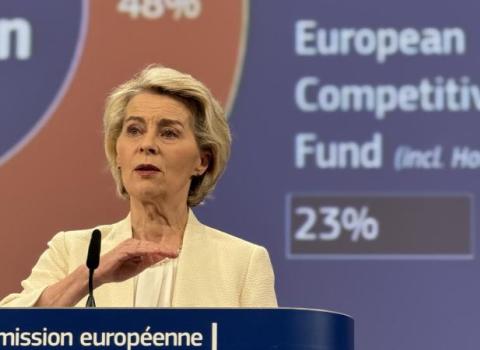The final version of the Horizon 2020 2016-2017 research plan, which will see almost €16 billion invested in research and innovation projects over the next two years, was published this week.
A large part of the money will go to the EU’s headline political goals, such as €1 billion to support the upgrade of manufacturing industries; over €1.5 billion to skills training for researchers and €232 million for research on smart cities.
There is almost €1.7 billion in 2016 alone for 1,000 European Research Council (ERC) grants and €114 million over two years for driverless car technology.
At least €8 million will be invested to increase the security of the EU's external borders through projects that aim to identify and prevent human trafficking and smuggling; €27 million for new technologies to help prevent crime and terrorism and €15 million for research into the origin and impact of migration flows in Europe.
Topics are set for two years and should not change, unless an emergency forces a re-allocation of resources, as happened with the Ebola epidemic last year.
Draft copies of the 2016 – 17 work programme have been available online for the past few weeks. The Commission has not changed any of the content of the drafts, but has tweaked some budgets and schedules.
The research plans took 18 months to draw up – the first six months was a period of exchange with researchers and lobbyists, the next six a consultation with member states, and the remaining time was spent stitching it all together.
Competition for grants from the previous 2014-2015 work programme was immense, with over 65,000 proposals submitted.
Overview of where the money goes
|
Horizon 2020 work programme 2016-17 (in € million) |
||||
|
|
2016 |
2017 |
||
|
|
No. of calls |
budget |
No. of calls |
budget |
|
‘excellent science’ pillar |
||||
|
ERC |
5 |
€1650.9 |
|
€1650.9 |
|
Marie Skłodowska-Curie actions |
5 |
€756.5 |
5 |
€839.5 |
|
Future and emerging technologies |
4 |
€228.2 |
3 |
€162.8 |
|
Research infrastructures |
5 |
€229.5 |
5 |
€284.5 |
|
‘industrial leadership’ pillar |
||||
|
ICT |
3 |
€476.5 |
2 |
€611.5 |
|
Nanotechnologies, advanced materials, biotechnology and production |
2 |
€279.8 |
2 |
€308.4 |
|
Space |
2 |
€87.7 |
3 |
€94.0 |
|
Access to risk finance |
1 call + financial instruments |
€2.5 + 335.0 |
financial instruments |
€407.5 |
|
Innovation in SMEs (does not include Eurostars) |
2 |
€382.0 |
2 |
€412.2 |
|
‘societal challenges’ pillar |
||||
|
Health, demographic social change and wellbeing |
1 |
€343.0 |
1 |
€315.3 |
|
Food security, sustainable agriculture and forestry, marine and maritime and inland water research and the bio-economy |
4 |
€340.5 |
4 |
€375.0 |
|
Secure, clean and efficient energy |
2 |
€448.7 |
2 |
€468.6 |
|
Smart, green and integrated transport |
3 |
€352.6 |
3 |
€403.5 |
|
Climate action, environment, resource efficiency and raw materials |
1 |
€142.9 |
1 |
€183.1 |
|
Europe in changing world – inclusive, innovative and reflective societies |
4 |
€98.0 |
4 |
€114.2 |
|
Secure societies |
3 |
€196.8 |
3 |
€196.3 |
|
Additional calls |
||||
|
Spreading excellence and widening participation |
1 |
€90.8 |
1 |
€111.4 |
|
Science with and for society |
1 |
€44.0 |
1 |
€54.6 |
|
Cross-cutting activities |
3 |
€577.5 |
3 |
€462.5 |
Number of two-stage competitions about the same
There remain around the same number of two-stage competitions as in the previous work programme. This is despite a statement from the Commission in June that this procedure for screening applications would become more widespread – a small change that was expected to stem the demand for grants.
The idea behind two-stage calls is that they separate the losers and winners faster, so less time and money is invested in a losing application.
The Commission will run traditional one-stage rounds in those competitions it expects to be relatively less popular. For those where a high demand is anticipated, it will run a two-stage procedure.
For instance, administrators are not expecting a deluge of applications for calls in the ‘inclusive societies’ section, so here there will be mainly one-stage calls, whereas they expect competitions like the SME instrument and the nanotechnologies section to be hotly contested, so will apply two-stage screening.
Competitions under the climate change section are also expected to be in demand, so at least half of these will be run across two-stages.
As a rule of thumb, 80 per cent of proposals should be rejected in a short-form, stage one evaluation. In stage two, where a longer application is required, at least 35 per cent of proposals should have a chance of success.
Topics remain open-ended
Some in the research community have urged the Commission to improve success rates by narrowing the target. In other words, to define more precisely what is to be funded in each call, rather than setting out a proposition and inviting researchers to suggest ways in which it can be addressed.
However, the call topics remain open-ended, or ‘challenge-based’ as the Commission calls it. This means researchers retain the freedom to approach topics in different ways.
One change is that evaluators have been told to be stricter on rating the impact of a proposal.
Impact is one of the three criteria Horizon 2020 evaluators use to assess the quality of research proposals. The other two are excellence and the quality of implementation. In order to measure impact, several indicators are considered, such as the capacity to innovate, the use of new knowledge, and contributions to the wider societal and economic impact. However, the key ones are those listed in the individual competitions themselves.
To be in with a shot of winning a grant in 2016 and 2017 applicants will have to be sure that their expected impact is clearly defined and rigorous.
More joint calls with rich countries
Increasing participation rates of so-called rich “third countries” has become a particular focus of the Commission’s research department this year.
In keeping with Research Commissioner Carlos Moedas’ priority of making EU research more open to the world, there will be more joint calls with rich countries than ever.
In 2016, €13 million will be split between competitions with Japan and South Korea and in 2017 there will be €7 million for a competition with Brazil.
This follows a request by the EU to these governments asking them to match EU funding to any of their researchers taking part in a Horizon 2020 project.
Swiss researchers and companies remain locked out of some Horizon 2020 sections, following a political row over a referendum on immigration the country held in 2014.
Moedas said he hopes the country can fully re-join the competition. “What I’d say to Switzerland is, ‘You are number one in biotech, number two in ERC grantees’. I wish we can keep working together,” he said.
Full re-entry is ruled out until the Swiss government comes up with a new agreement on the free movement of people, a central plank of EU law.
More money for risky investments
The large budget for risk finance has already caught the eye of researchers and lobbyists.
Most notably, the Horizon 2020’s investment vehicle, the InnovFin scheme, will divert €100 million from the health section to a pilot for antibiotic research financing, making loans of between €7.5 million and €75 million to companies and research institutions for the development of new antibiotics.
*A previous version said the contentious Swiss referendum was held in 2013. It's been corrected to 2014.





 A unique international forum for public research organisations and companies to connect their external engagement with strategic interests around their R&D system.
A unique international forum for public research organisations and companies to connect their external engagement with strategic interests around their R&D system.